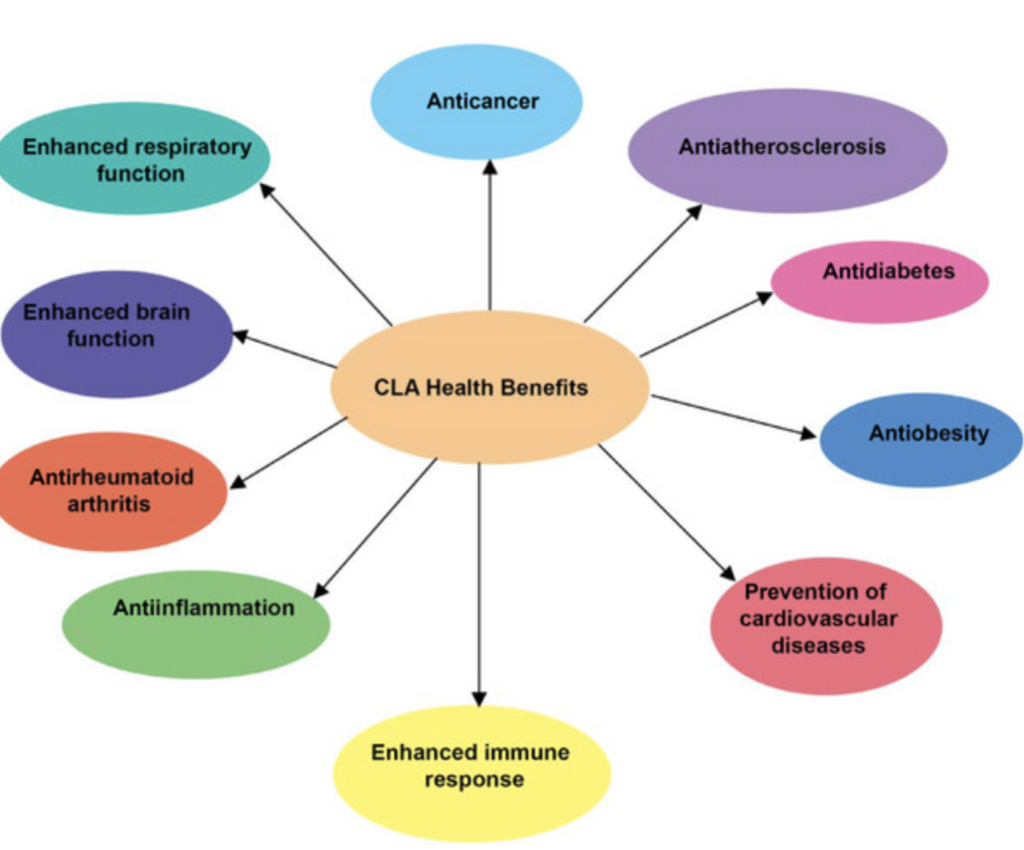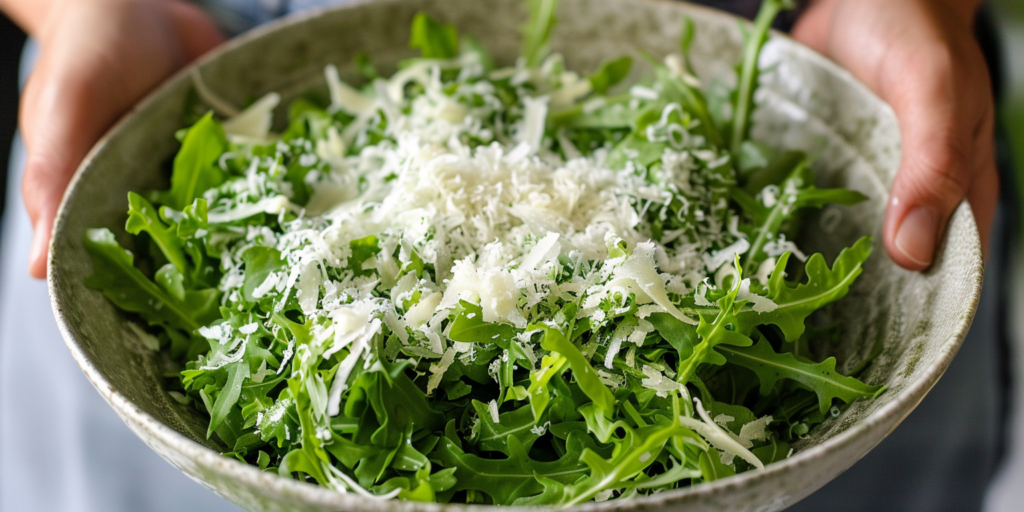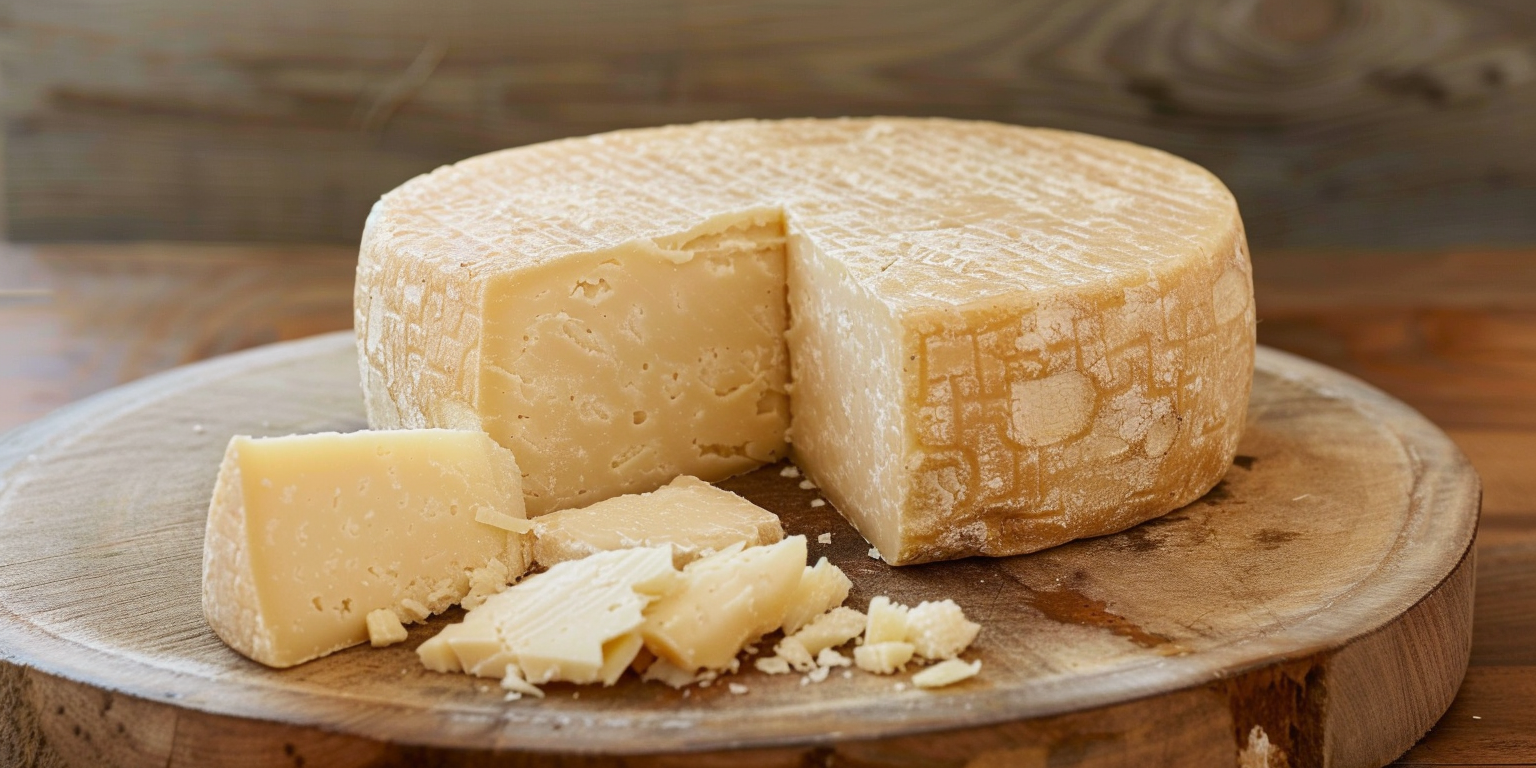by Donnie Yance
Parmigiano Reggiano, a cheese to which I am somewhat addicted, offers a delicious sharp, nutty, and slightly salty flavor that has earned it the nickname “King of Cheeses” among culinary enthusiasts worldwide.
The Health Paradox of Cheese
Cheese is a nutrient-dense fermented dairy product consumed worldwide, though its health effects remain controversial. It provides high-quality protein (mainly casein), essential minerals (calcium, phosphorus, magnesium), vitamins (A, K2, B2, B12, folate), and beneficial bioactive compounds including probiotics. However, cheese also contains significant amounts of saturated fat and sodium, which are generally considered unfavorable for cardiovascular health.
The molecular structure and nutritional profile of cheese varies substantially by type. While many varieties contain potentially problematic levels of fat and sodium with limited nutritional value, others like Parmigiano Reggiano offer exceptional health benefits despite being cheese.
Multiple meta-analysis studies provide comprehensive perspectives on cheese consumption research, identifying uncertainties, biases, and knowledge gaps in existing evidence.1 Parmigiano Reggiano is characterized by exceptional nutritional qualities, containing substances with specific biological actions. According to the definition established by the European Union, it can be fully classified as a ‘functional’ food.2
Origin and Production
This exceptional hard cheese is crafted exclusively from raw cow’s milk in specific regions of Northern Italy—Parma, Reggio Emilia, Modena, and portions of Bologna and Mantua. The production process adheres to centuries-old traditions, beginning with the careful selection of milk and culminating in a meticulous aging process that typically spans 12 to 24 months. During this maturation period, the cheese develops its distinctive crumbly texture and complex, savory profile that makes it instantly recognizable.
True Parmigiano Reggiano carries a Protected Designation of Origin (PDO) certification, a prestigious status that ensures only cheese produced in these designated Italian regions following strict traditional methods can bear the name. This protection preserves both the authenticity of the product and the cultural heritage it represents.
Health Benefits of Parmigiano Reggiano
When consumed in moderation, Parmigiano Reggiano offers numerous health advantages beyond its exquisite taste. As an exceptional dairy product, it provides:
- Rich Nutritional Profile: An excellent source of calcium, high-quality protein, and essential vitamins including B-12, that support bone health and muscle maintenance.
- Mineral Content: Abundant in calcium, phosphorus, sodium, potassium, magnesium, zinc, iron, and selenium, which are vital for energy metabolism, immune function, and neurological health.
- Beneficial Fats – Conjugated linoleic acid (CLA): This beneficial fatty acid has been scientifically linked to several health advantages, including reduced inflammation, potential anti-cancer properties, and assistance with weight management through improved body composition. Research suggests CLA may help decrease body fat while preserving lean muscle mass.
- Probiotic Properties: Features beneficial bacteria that contribute to gut health by supporting a balanced microbiome.
- Low Lactose Content: Due to its long aging process, Parmigiano Reggiano contains minimal lactose, making it more digestible for those with mild lactose sensitivity.
The concentrated nature of this cheese means that even small amounts can provide significant nutritional benefits while enhancing the flavor of countless dishes—from simple pasta preparations to complex gourmet creations.
The health benefits of nutrient-dense parmesan cheese include enhancing the: immune system, digestive system, nervous system, and bone health (over 1000 mg of calcium per 100 grams). Reggiano Parmesan is easily digested and filled with healthy proteins and lipids, is lactose free, rich in calcium, and has prebiotic and probiotic effects.
Reggiano Parmesan is a ripened cheese with high nutritional value. Throughout the ripening process the bacteria promote an extensive breakdown of cow’s milk proteins resulting in peptides that exhibit positive immunoregulatory activities.
The proteins of Reggiano Parmesan are characterized by a high biological value. In fact, they contain high concentrations of all the essential amino acids. Amino acids such as isoleucine, leucine, lysine, threonine, tryptophan, valine, methionine, phenylalanine, tyrosine, and histidine are present in optimal amounts and in a particularly bioavailable form. In particular, the high content of lysine in cheese protein is noticeable.
During the Parmigiano Reggiano ripening process, a discrete amount of short-chain fatty acids (SCFAs) are synthesized with a considerable production of the anticancer fatty acid called butyrate. It is important to highlight that Parmigiano Reggiano contains 100% more butyrate than other fermented cheeses.
The Parmigiano Probiotic Connection
The probiotic Lactobacillus rhamnosus (LR) contained in Parmigiano Reggiano plays a crucial role in producing high levels of enzymes responsible for the proteolytic activity, fatty acid metabolism, and for the release of butyrate. LR has been very well studied and has been shown to aid in immunity in a number of different settings. Various health effects of Parmesan cheese are well documented, including the prevention and treatment of gastrointestinal infections and diarrhea, as well as stimulation of immune responses that improve the production of antibodies induced by vaccines. Research has also shown that compounds in Parmesan may help prevent certain allergic symptoms that can occur from vaccines. 3 These beneficial effects are attributed to the bioactive peptides and probiotic bacteria present in traditionally aged Parmesan cheese. There is good evidence for the use of LR in the prevention and treatment of diarrhea, from acute infections or drug side effects. One study found that LR could be just as helpful as an antibiotic for treating urinary tract infections.
Lactobacillus Rhamnosus: An Overview of Its Use in Cancer
Lactobacillus rhamnosus (LR) is one of the most characterized and utilized healthy bacteria. In particular, LR is able to reverse intestinal dysbiosis and moderate diarrhea. Moreover, preclinical studies have documented its effects in reducing chronic inflammation associated with cancer development. LR should be considered in patients undergoing specific therapeutic protocols, including chemotherapy and pelvic radiotherapy, in order to reduce the development of severe diarrhea and thus improve the adherence to the therapy and patients’ quality of life.

TJ, tight junction; DC, dendritic cell; LGG, Lactobacillus rhamnosus
LR may be helpful in those patients undergoing anti-cancer treatments. It protects against tumor onset and invasiveness, lowers the metabolism of oncogenic substrates, increases the production of IgAs, protects against local inflammation, diminishes intestinal crypt loss and apoptosis during radiation therapy. Finally, it is shown to be helpful in reducing diarrhea severity and incidence in cancer patients.
Parmigiano Reggiano showed that it can have up to 10 million colony forming units of viable lactic acid bacteria per gram of cheese consumed.
By analyzing the Parmigiano Reggiano composition and considering its high content in hydrolysated peptides, the presence of butyrate and other bacterial components, it is easy to hypothesize that this cheese has a high potential to benefit immune health.

Based on its nutritional characteristics and of its easy digestibility Parmigiano Reggiano cheese is recommended for all age groups.
Key Facts About Conjugated Linoleic Acid (CLA)
CLA is a group of positional and geometric isomers of linoleic acid with conjugated double bonds. The 9cis,11trans and 10trans,12cis isomers demonstrate the most significant biological activity. 4
CLA is found predominantly in organic milk fat from free-range, grass-fed cows. Research has demonstrated CLA’s favorable impact on several biological processes, particularly carcinogenesis, body composition, and metabolism. 5
CLA content in cheese directly correlates with CLA levels in milk, as these bioactive lipids transfer from milk to cheese during production. The CLA concentration in milk can be enhanced by using feed enriched with α-linolenic and linoleic acids, including pasture grass, plant oils, oil-rich cereals, and fish oils. While previous reviews from the last decade suggested CLA levels remained stable during cheese ripening, current research demonstrates that specific probiotic bacteria—namely Lactiplantibacillus plantarum, Lactobacillus acidophilus, Lacticaseibacillus casei, and Bifidobacterium lactis—can significantly increase CLA levels by converting linoleic acid throughout the ripening process. These bacterial starters elevated CLA concentrations by factors of 1.19, 1.6, and 6.6 times compared to controls in Ovine model, Miniature, and Cheddar cheese varieties, respectively. However, it should be noted that CLA levels can decrease during storage due to lipid oxidation triggered by environmental factors such as exposure to fluorescent light or aerobic conditions. 6

Actions and Pharmacology
CLA demonstrates multiple beneficial activities in humans, including:
- Anti-carcinogenic effects
- Anti-atherogenic properties
- Anti-diabetogenic actions
- Body composition-modifying activities

These activities have been well-documented in experimental animal models. 7
Evidence-Based Benefits
Body Composition
- Reduces body fat mass while preserving lean muscle tissue
- Meta-analysis of 18 human studies confirms modest but significant fat reduction at 3.2g/day 8
- A randomized, double-blind study with 60 overweight/obese volunteers found significantly greater reduction in body fat mass with CLA supplementation 9
- Works through multiple mechanisms including increased energy expenditure and decreased fat storage 10
Metabolic Effects
- Improves insulin sensitivity in type 2 diabetics
- Reduces blood glucose, serum triglycerides, and cholesterol levels
- Clinical trial with 54 obese adults showed 3000mg daily CLA for 3 months significantly decreased fasting plasma glucose and improved insulin resistance markers 11
- Activates PPAR-gamma receptors, enhancing glucose regulation 12
Anti-Cancer Properties
- Inhibits multiple types of cancer cells including breast, colon, and gastric cancers
- Epidemiological evidence: women consuming ≥4 servings of high-fat dairy foods daily had 41% lower risk of bowel cancer.
- CLA inhibits peritoneal metastasis in human gastric and colon cancer cells, improving survival rates in animal models 13
- The breast cancer-inhibitory effects of CLA work through multiple mechanisms including decreased production of 5-HETE and reduced angiogenesis 14
Anti-Inflammatory Effects
- Decreases production of pro-inflammatory cytokines and eicosanoids
- Reduces TNF-alpha, IL-6, and other inflammatory markers 15
- Dietary CLA decreased cachexia (muscle wasting) and modulated macrophage TNF-alpha production in experimental models 16
Clinical Applications
- Effective dose ranges from 3-7g daily
- Different isomers may produce varying effects
- Systematic review of human studies shows greater benefits with consistent supplementation over 12+ weeks 17

Conclusion
Parmigiano Reggiano is much more than just a flavorful cheese—it’s a true superfood with impressive health benefits. From its rich supply of protein, calcium, and vitamins to its powerful probiotics and immune-boosting compounds like CLA and Lactobacillus rhamnosus, this cheese supports digestion, bone strength, metabolism, and even cancer prevention. Its long aging process makes it easier to digest, even for those sensitive to lactose. Whether sprinkled on pasta, salads, eggplant, or enjoyed on its own, Parmigiano Reggiano is a delicious and nutritious choice that brings both tradition and wellness to your recipes. No wonder it’s often called the “King of Cheeses”!
About the Author:
Donald R. Yance is the founder of the Mederi Center. A Clinical Master Herbalist and Certified Nutritionist, Donnie is renowned for his extraordinary knowledge and deep understanding of the healing properties of plants and nutrition, as well as of epigenetics, laboratory medicine, oncologic pathology, and molecular oncology. He is a professional member of the American Herbalists Guild, National Association of Nutrition Professionals, Academy of Integrative Health and Medicine, and the Society for Integrative Oncology.
References:
1. Zhang M, Dong X, Huang Z, Li X, Zhao Y, Wang Y, Zhu H, Fang A, Giovannucci EL. Cheese consumption and multiple health outcomes: an umbrella review and updated meta-analysis of prospective studies. Adv Nutr. 2023 Sep;14(5):1170-1186. doi: 10.1016/j.advnut.2023.06.007. Epub 2023 Jun 15. PMID: 37328108; PMCID: PMC10509445.
2. Summer A, Formaggioni P, Franceschi P, Di Frangia F, Righi F, Malacarne M. Cheese as Functional Food: The Example of Parmigiano Reggiano and Grana Padano. Food Technology and Biotechnology. 2017 Sep;55(3):277-289. doi: 10.17113/ftb.55.03.17.5233. PMID: 29089844; PMCID: PMC5654426.
3. Bottari, B., Levante, A., Neviani, E., & Gatti, M. (2020). How the fewest become the most: Lactic acid bacteria biodiversity in Italian raw milk Parmigiano Reggiano cheese. Journal of Dairy Science, 103(5), 3998-4015. https://doi.org/10.3168/jds.2019-17728
4. Banni S. (2002). Conjugated linoleic acid metabolism. Current Opinion in Lipidology, 13(3):261-6.
5. Govari M, Vareltzis P. Conjugated linoleic acid in cheese: A review of the factors affecting its presence. J Food Sci. 2025 Feb;90(2):e70021. doi: 10.1111/1750-3841.70021. PMID: 39898990; PMCID: PMC11789828.
6. Govari M, Vareltzis P. Conjugated linoleic acid in cheese: A review of the factors affecting its presence. J Food Sci. 2025 Feb;90(2):e70021. doi: 10.1111/1750-3841.70021. PMID: 39898990; PMCID: PMC11789828.
7. Govari M, Vareltzis P. Conjugated linoleic acid in cheese: A review of the factors affecting its presence. J Food Sci. 2025 Feb;90(2):e70021. doi: 10.1111/1750-3841.70021. PMID: 39898990; PMCID: PMC11789828.
8. Whigham LD, Watras AC, Schoeller DA. (2007). Efficacy of conjugated linoleic acid for reducing fat mass: a meta-analysis in humans. American Journal of Clinical Nutrition, 85(5):1203-11.
9. Blankson H, Stakkestad JA, Fagertun H, et al. (2000). Conjugated linoleic acid reduces body fat mass in overweight and obese humans. Journal of Nutrition, 130(12):2943-8.
10. Corl BA, Mathews Oliver SA, Lin X, et al. (2008). Conjugated linoleic acid reduces body fat accretion and lipogenic gene expression in neonatal pigs fed low- or high-fat formulas. Journal of Nutrition, 138(3):449-54.
11. Esmaeili Shahmirzadi F, Ghavamzadeh S, Zamani T. (2019). The Effect of Conjugated Linoleic Acid Supplementation on Body Composition, Serum Insulin and Leptin in Obese Adults. Archives of Iranian Medicine, 22(5):255-261.
12. Zhou X, Sun C, Jiang L, Wang H. (2004). Effect of conjugated linoleic acid on PPAR gamma gene expression and serum leptin in obese rat. Wei Sheng Yan Jiu, 33(3):307-9.
13. Kuniyasu H, Yoshida K, Sasaki T, et al. (2006). Conjugated linoleic acid inhibits peritoneal metastasis in human gastrointestinal cancer cells. International Journal of Cancer, 118(3):571-576.
14. Kim JH, Hubbard NE, Ziboh V, Erickson KL. (2005). Attenuation of breast tumor cell growth by conjugated linoleic acid via inhibition of 5-lipoxygenase activating protein. Biochimica et Biophysica Acta, 1736(3):244-50.
15. Yu Y, Correll PH, Vanden Heuvel JP. (2002). Conjugated linoleic acid decreases production of pro-inflammatory products in macrophages: evidence for a PPAR gamma-dependent mechanism. Biochimica et Biophysica Acta, 1581(3):89-99.
16. Yang M, Cook ME. (2003). Dietary conjugated linoleic acid decreased cachexia, macrophage tumor necrosis factor-alpha production, and modifies splenocyte cytokines production. Experimental Biology and Medicine, 228(1):51-8.
17. Salas-Salvado J, Marquez-Sandoval F, Bullo M. (2006). Conjugated linoleic acid intake in humans: a systematic review focusing on its effect on body composition, glucose, and lipid metabolism. Critical Reviews in Food Science and Nutrition, 46(6):479-88.
18. Joyal SV. (2004). A perspective on the current strategies for the treatment of obesity. Current Drug Targets CNS and Neurological Disorders, 3(5):341-56.
19. Toomey S, McMonagle J, Roche HM. (2006). Conjugated linoleic acid: a functional nutrient in the different pathophysiological components of the metabolic syndrome? Current Opinion in Clinical Nutrition and Metabolic Care, 9(6):740-7.
20. Terpstra AH, Beynen AC, Everts H, et al. (2002). The decrease in body fat in mice fed conjugated linoleic acid is due to increases in energy expenditure and energy loss in the excreta. Journal of Nutrition, 132(5):940-5.


You made my day with this one Donnie! Love this cheese – tastes so good on just about anything you put it on!
Now I’m hungry…
Hooray for this cheese! So glad aa favourite food is SO beneficial. Thanks Donnie!